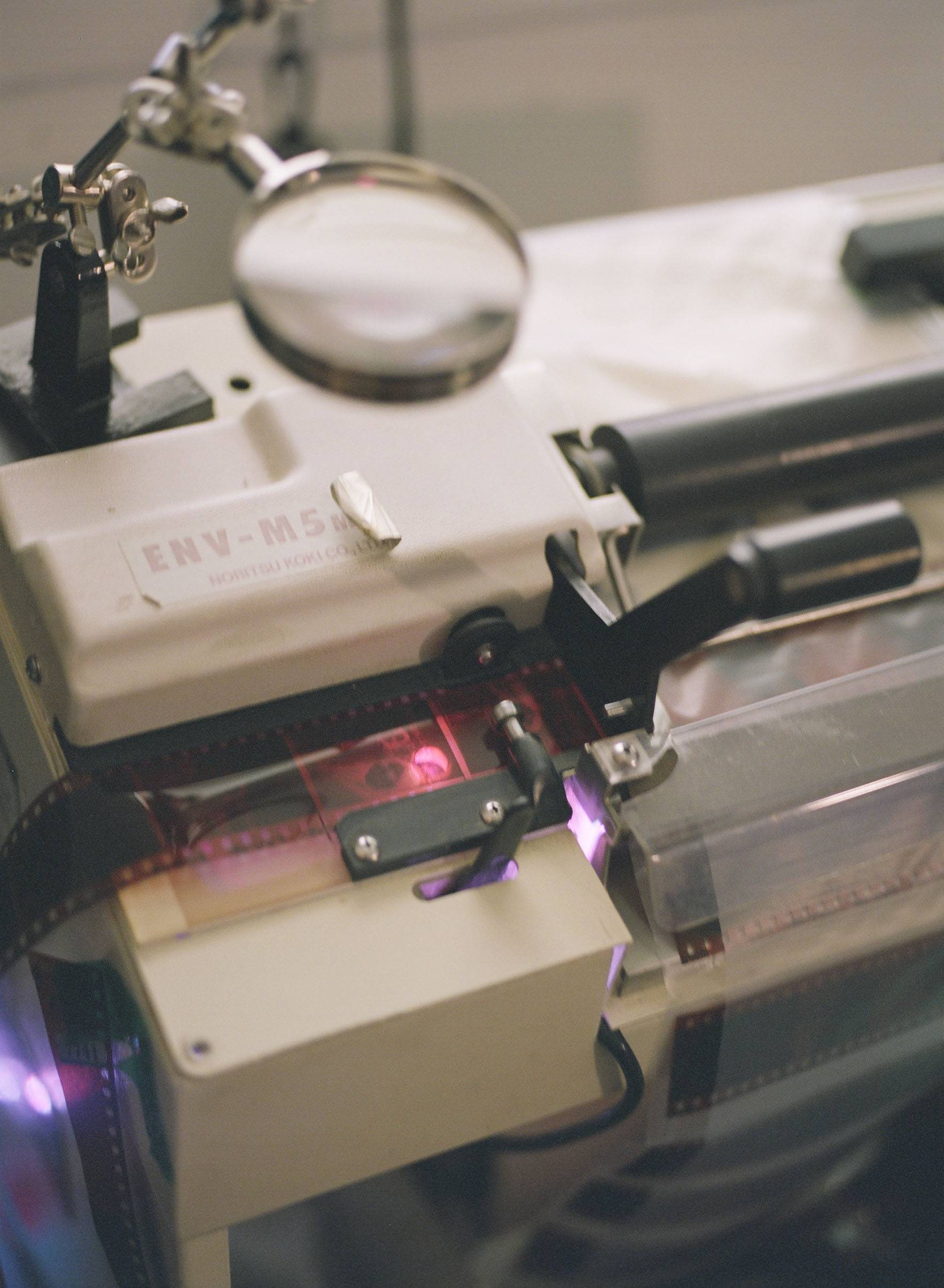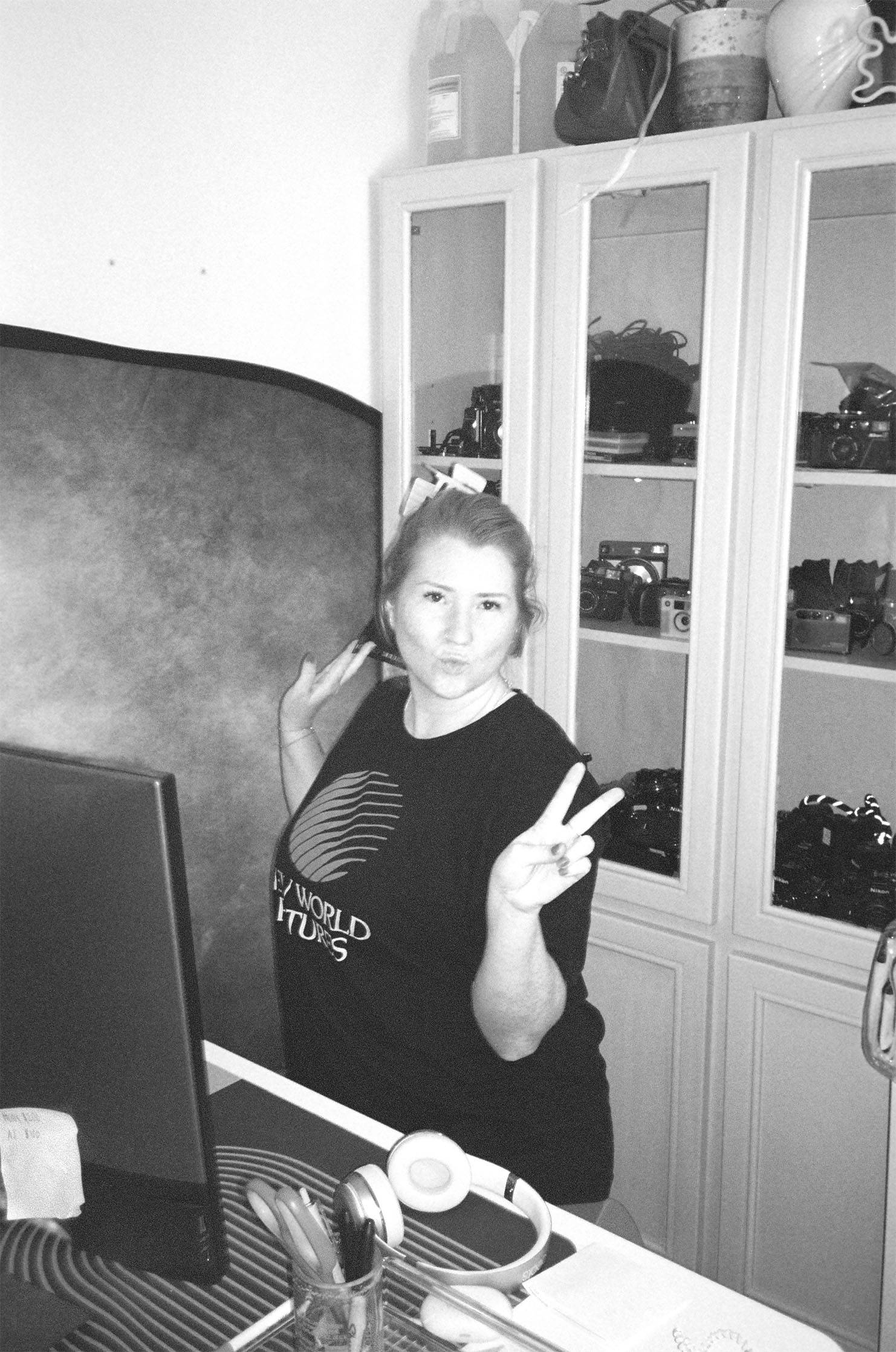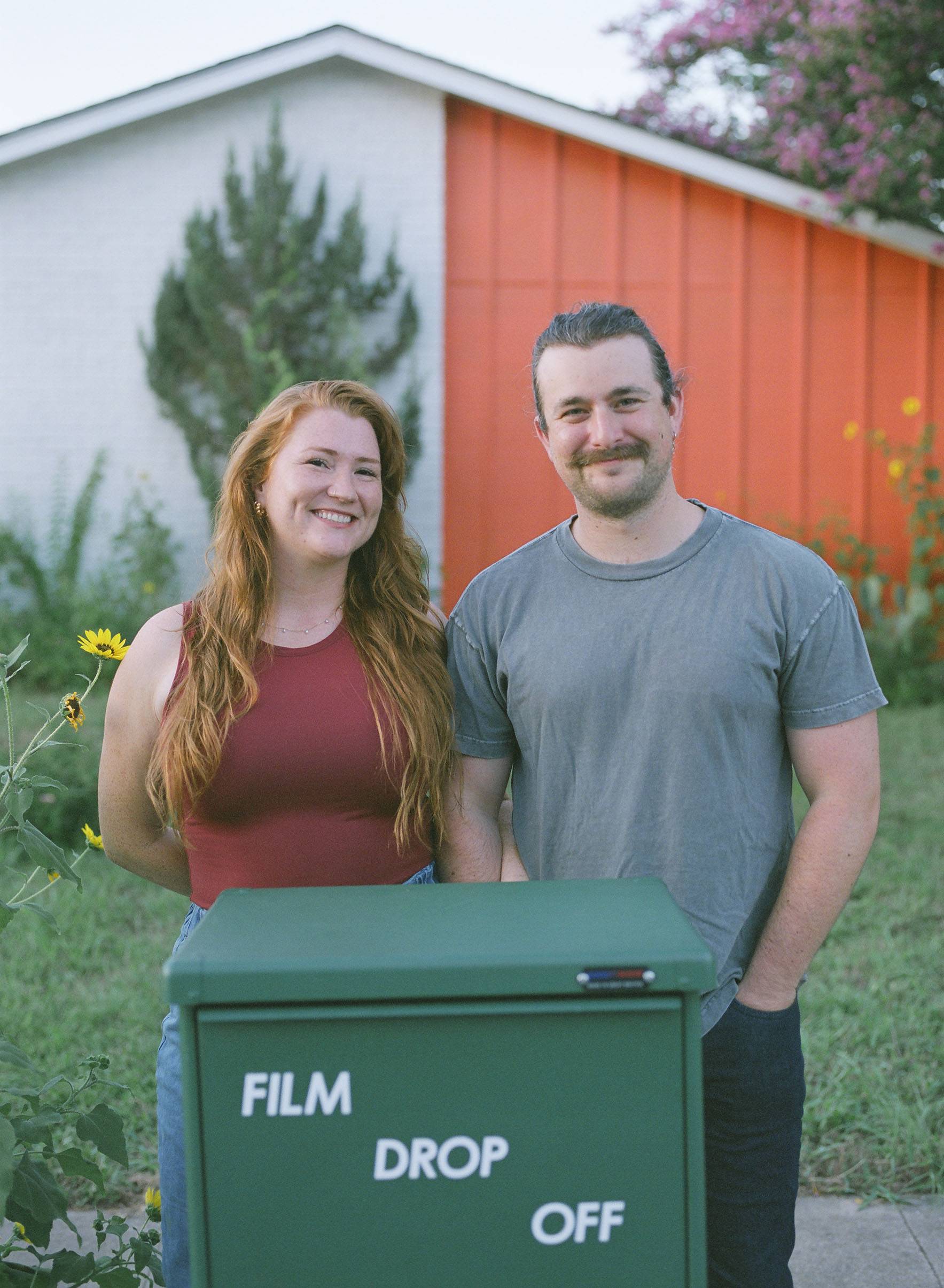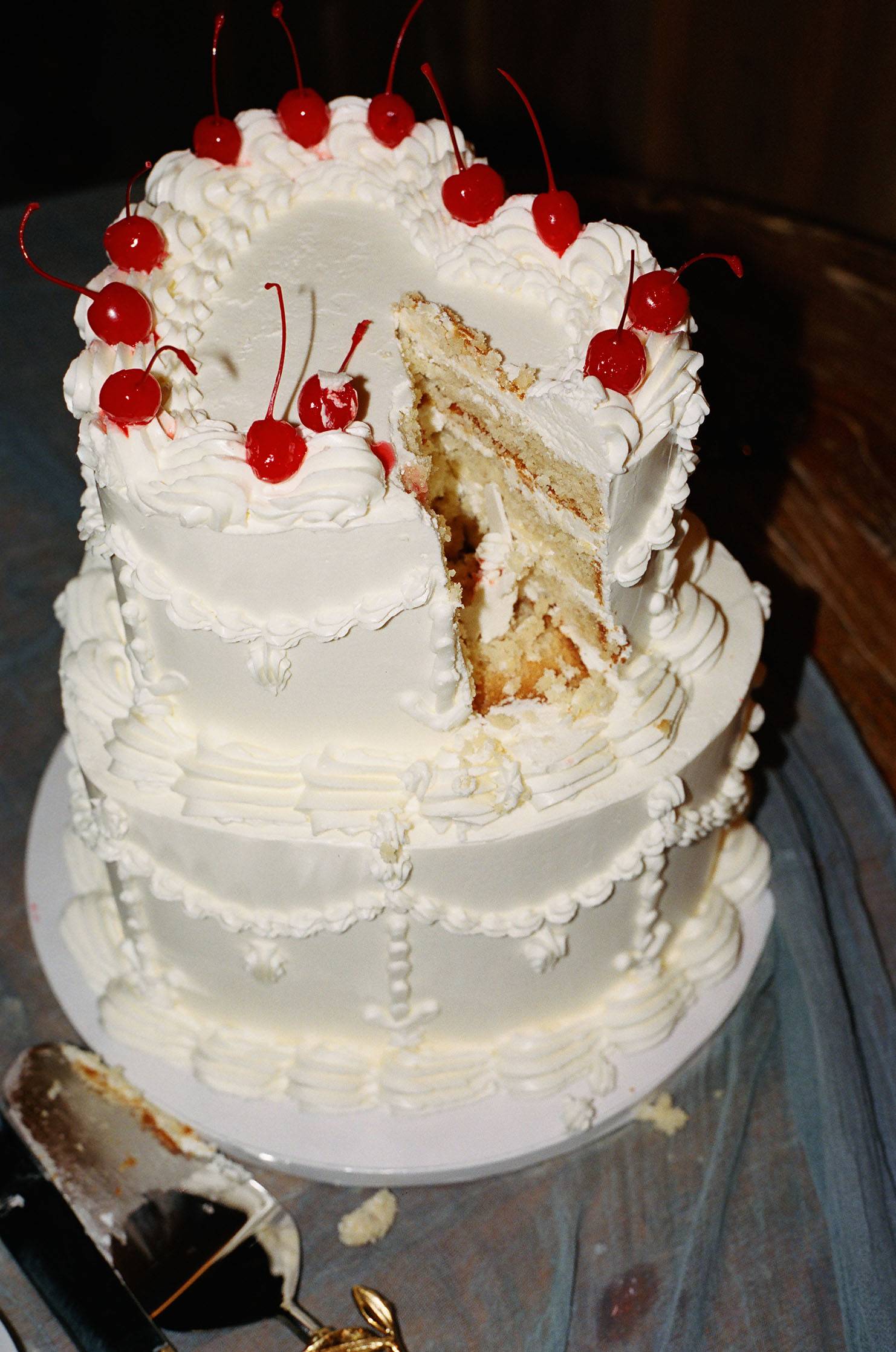Lane Fortenberry | June 26, 2024

“I went from taking a billion pictures to now seeing hundreds of photos people take — and I just love it.” - Holly McVeety-Mill
Pop the back open of your new (old) indestructible film camera. Load up your 35mm film spool and crank the advance lever. Once you see the magic number one in the tiny counter window, you’re ready to go. Adjust the settings appropriate for your environment and subject. Now, most importantly, go have fun.
At least that should be the most important part of film photography.
Since the COVID-19 pandemic, the world has seen a revival of the analog film industry. Millions of people across the globe began searching for new hobbies, or rekindling their love for nostalgic activities, to keep themselves occupied while isolated. This led to the renewed interest in film cameras.

Capitalizing on this trend, Texas State University alum Holly McVeety-Mill and husband AJ Gerstenhaber, who considers himself a Bobcat by association, started Turbo Photo Film Lab in October 2023, named after their corgi. Operating out of their home in Austin, they aim to encourage people who are interested in film photography by offering film processing and advice.
Turbo Photo provides a welcoming environment for newcomers who might be overwhelmed by the technical aspects of film photography. Intentional or not, expert advice can sometimes be discouraging, leading to the loss of enjoyment and curiosity.
“We tell people any way you do it is good, and we will offer you non-judgmental advice if we see something wrong in the lab or if you want to ask us questions,” Gerstenhaber said.
McVeety-Mill, who graduated in 2015 as a fine art photography major, began developing her photography skills when she was in middle school in Austin. After studying her craft at TXST, she started a wedding photography business with Gerstenhaber’s help.
“We met in high school algebra class in 2011 and have been together since then,” McVeety-Mill said. “I’m a year older than AJ and was choosing between art school at Texas State or SCAD in Georgia. I decided I didn’t want to be that far away from home and my family.”
At TXST, McVeety-Mill spent most of her time in the Sabinal Building, learning about the conceptual part of photography and how the medium and skillset fits into the art world.

“I learned how to develop myself at Texas State,” she said. “I have many fond memories there. Barry Stone was my thesis professor and was very encouraging. The professors were able to be critical of our work and set us up for success at the same time. They informed us of what it’s really like in the art world once we leave and helped shaped my perspective on creating art that’s financially fulfilling but also meaningful to me.”
She took the lessons she learned at TXST, including how to operate a darkroom, and applied them to her wedding photography business, later focusing on taking portraits.
“I switched to focusing on capturing people’s personalities through portraits and how it makes them feel,” she said. “Obviously that’s so important on your wedding day, and it’s a very different skillset. I started getting really good at making people feel comfortable.”
Though digital cameras had largely displaced film cameras by the 2000s, the couple took film cameras on their trips together to capture vacation memories. As they became more experienced with film, they began offering analog wedding packages.
“Digital is just much safer when you’re a new photographer,” Gerstenhaber said. “You can take a million shots and it doesn’t cost you any money. A trillion things can go wrong even when you take a digital photograph, so additional steps like loading the film correctly, making sure it’s not expired, and scanning it properly adds a lot of variables.”

As their interest grew in controlling the development process of their own film, they pondered the idea of starting their own film processing lab that would engage with the community in an approachable, friendly, and nonjudgmental way.
“I think every wedding photographer reaches a retirement age, and it’s about 10 years,” McVeety-Mill said. “That’s what happened to me. I was just ready to not be shooting weddings anymore.”
McVeety-Mill and Gerstenhaber saw a business opportunity in the growing popularity of film photography and newcomers approaching the hobby. As Turbo Photo, they carved out a place to be trusted experts in the community, but friendly ones.
“If you read posts online, it’s very clear there’s an enormous consensus that if you don’t do it this way, then you’re doing it wrong and your effort is worthless,” Gerstenhaber said. “It’s common that you find such strong and pervasive opinions with old hobbies, but it becomes a combination of dismissive and condescending. It might dissuade someone from shooting on film at all.”
The couple started their lab with affordable pricing in mind because to them, it didn’t need to be expensive. They installed a green drop box next to the curb in their front yard for people to drop off their undeveloped rolls of film no matter the day or time.

“The drop box has become resonant and something people associate with the brand,” he said. “To us, it was just something we had to do so people didn’t come knocking on the door. They like that it’s accessible. You don’t have to talk to anybody — just drop off your film and we’ll email you when it’s ready and to pick up your negatives.”
They had no idea the kind of volume to expect when they officially launched the lab. The idea was maybe about eight rolls a week. They announced the opening on the same day they opened, which, in hindsight, was a marketing misstep. Not a single roll of film was dropped off on opening day, which caused a slight panic.
“We were like, ‘Oh my god. What have we done?’” he said. “It was silly because no one had time to change their plans to drop off with us.”
However, two complete strangers dropped off their film the next day. Then it continued to pile on, and the couple recalled only a few days when nothing was in the drop box.
Within about six weeks, operating the film lab became McVeety-Mill’s full-time job due to the amount of time it takes to develop, scan, and process a roll of film.

“Our plan was to keep it small to be your friendly neighborhood lab, but we were shocked,” she said. “Our volume has increased consistently ever since we opened. Most Mondays I’m running between 65 and 75 rolls, and the most I’ve run on a single day is 93. It’s so much.
“I went from taking a billion pictures to now seeing hundreds of photos people take — and I just love it.”
Even with her well-developed photography skillset and many years of experience, McVeety-Mill said she still approaches taking pictures with the beginner mindset of being curious and nonjudgmental. She recommends everyone do the same.
“We’ve been doing it for so long, but there are still things we’re discovering,” she said. “We still mess up and we learn from it. Mistakes are part of the film process, so welcome them and don’t get discouraged.”
Visit the TXST photography program website for more information about courses, faculty, and to explore student work.
See the gallery below for some of McVeety-Mill and Gerstenhaber's favorite pictures they've taken on film.
Share this article
For more information, contact University Communications:Jayme Blaschke, 512-245-2555 Sandy Pantlik, 512-245-2922 |
